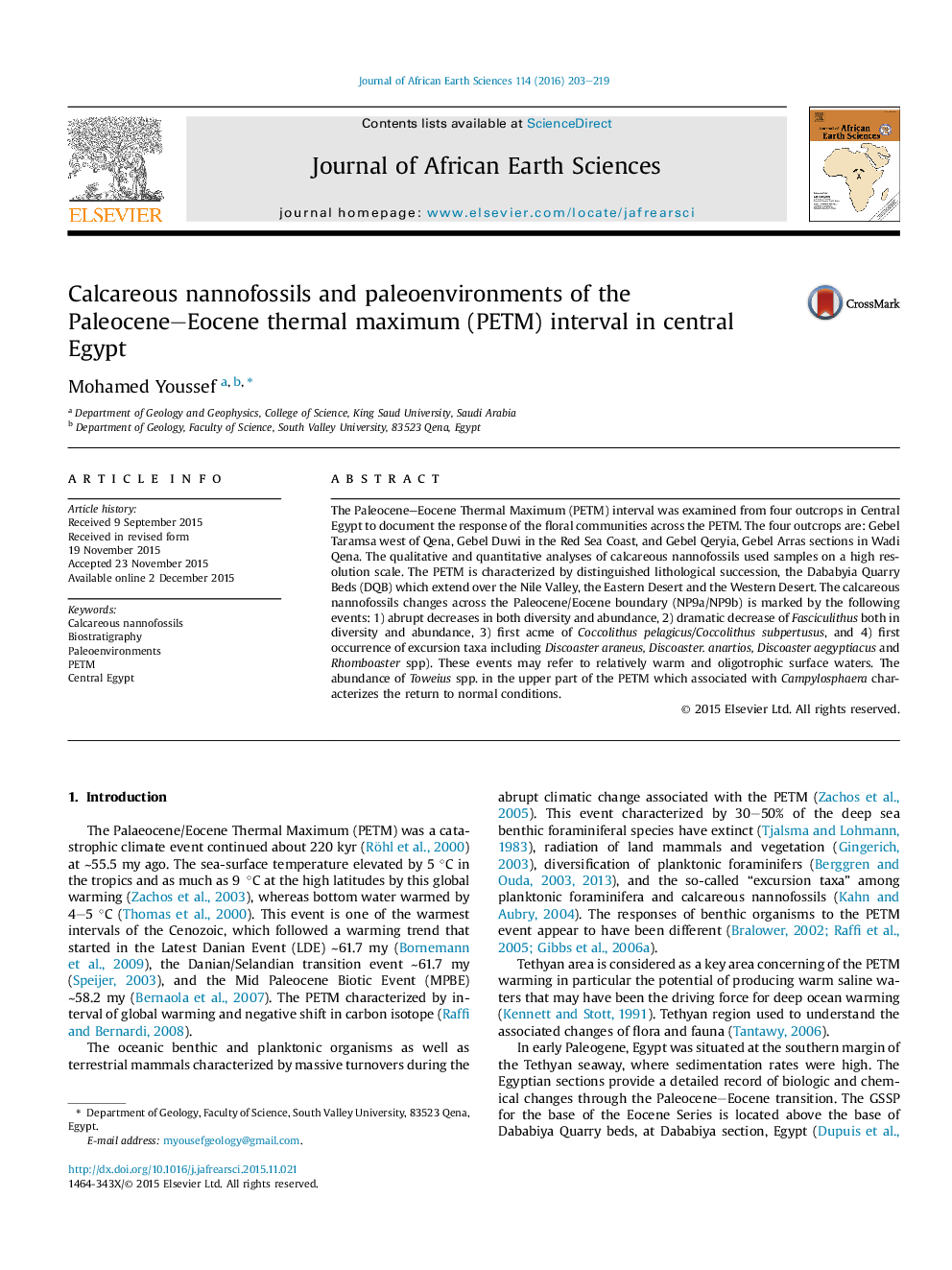| Article ID | Journal | Published Year | Pages | File Type |
|---|---|---|---|---|
| 4728472 | Journal of African Earth Sciences | 2016 | 17 Pages |
•I studied the Paleocene/Eocene transition in central Egypt.•Four surface sections have been investigated.•The turnover of the calcareous nannofossils was investigated.•The RD assemblage well exist at the transition sequence.•Fasciculithus has it's LAD in the lower part of NP10.
The Paleocene–Eocene Thermal Maximum (PETM) interval was examined from four outcrops in Central Egypt to document the response of the floral communities across the PETM. The four outcrops are: Gebel Taramsa west of Qena, Gebel Duwi in the Red Sea Coast, and Gebel Qeryia, Gebel Arras sections in Wadi Qena. The qualitative and quantitative analyses of calcareous nannofossils used samples on a high resolution scale. The PETM is characterized by distinguished lithological succession, the Dababyia Quarry Beds (DQB) which extend over the Nile Valley, the Eastern Desert and the Western Desert. The calcareous nannofossils changes across the Paleocene/Eocene boundary (NP9a/NP9b) is marked by the following events: 1) abrupt decreases in both diversity and abundance, 2) dramatic decrease of Fasciculithus both in diversity and abundance, 3) first acme of Coccolithus pelagicus/Coccolithus subpertusus, and 4) first occurrence of excursion taxa including Discoaster araneus, Discoaster. anartios, Discoaster aegyptiacus and Rhomboaster spp). These events may refer to relatively warm and oligotrophic surface waters. The abundance of Toweius spp. in the upper part of the PETM which associated with Campylosphaera characterizes the return to normal conditions.
